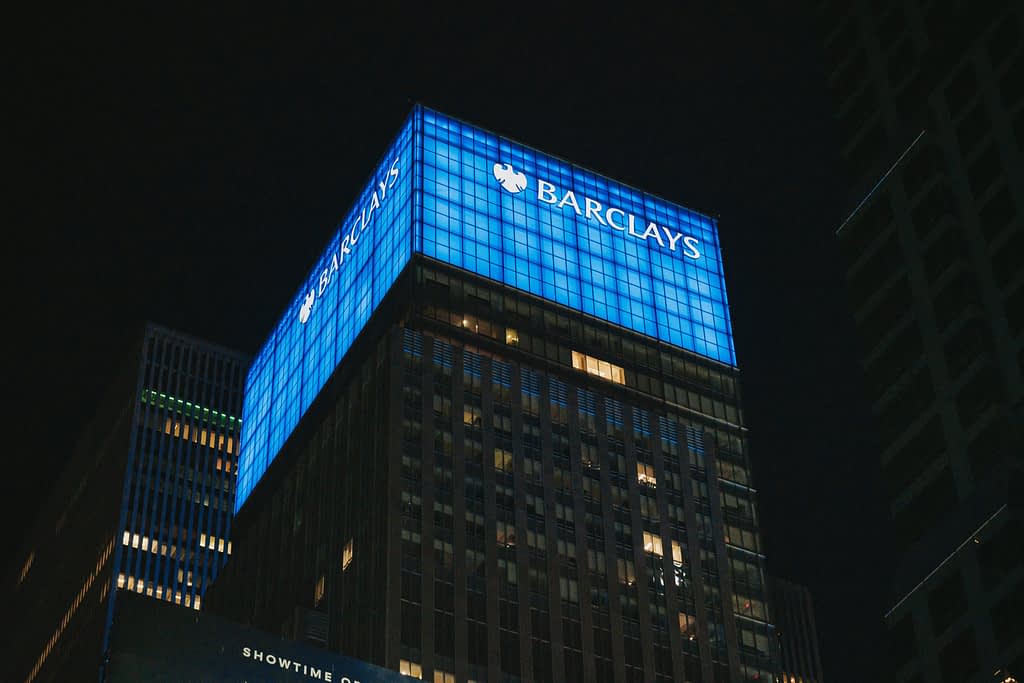While most banks struggle with market uncertainty, British investment bank Barclays managed to turn chaos into a goldmine. How did trade wars and volatility deliver a record 23% earnings growth to £5.2 billion? The answer lies in investment banking, which perfectly timed the opportunities created by Trump’s tariffs and transformed market turbulence into exceptional Q2 2025 results.
Market volatility delivered 10% growth for Barclays investment banking
The investment banking division reported revenues of £3.3 billion for the three months to June, representing 10% year-on-year growth. This division, traditionally the backbone of Barclays’ income stream, exceeded analyst estimates of £3 billion through strong trading activity. Barclays’ financial results confirm this key division’s ability to offset declining advisory fees from transaction services.
The success of this crucial division stems from intensive bond and equity trading. Volatility caused by Trump’s trade policies increased trading margins through more frequent buying and selling. Tariffs on Chinese goods heightened currency pair volatility, which bank traders leveraged for higher returns.
The bank managed to compensate for declining advisory fees from mergers and acquisitions through strong performance in trade facilitation and proprietary trading. This ability to generate revenue even when other income streams decline demonstrates the strength of Barclays’ trading model across global capital markets. The division also benefited from ongoing restructuring measures under CEO C.S. Venkatakrishnan, including strategic personnel changes with Alex Ham’s arrival from Deutsche Numis as global chairman.
Capital positions strengthened while maintaining high profitability
Barclays reported significant improvement in key capital metrics, which serve as crucial indicators of financial stability for investors:
- CET1 ratio (key financial stability indicator) rose to 14% from 13.9% in March
- Return on tangible equity reached 13.2% in the first half
- Total group revenues met analyst forecasts of £7.2 billion
The bank now has several billion pounds more in safety reserves than last year, providing additional room for future growth and potential regulatory changes. Capital adequacy rising above the 14% threshold enables more aggressive trading strategies while maintaining required safety levels.
Shareholders to receive record £1.4 billion
Strong capital positions enabled the bank to announce one of the most generous capital return programs in its recent history. The bank announced an aggressive shareholder capital return program worth £1.4 billion, representing a 21% increase compared to the previous year. The program includes:
- Share buybacks worth £1 billion
- Interim dividend of 3 pence per share
- Total shareholder capital distributions exceeding 25% of net income
This approach signals management confidence in the bank’s future performance while responding to investor expectations for higher returns. CEO Venkatakrishnan confirmed that the bank remains on track to achieve its three-year strategic plan objectives focused on structurally higher and more stable returns.
Barclays ideally positioned to transform future market swings into gains
With a robust capital base and proven adaptability, the bank prepares for another period of market uncertainty. The current environment of high volatility due to changing American trade policy creates opportunities for Barclays to continue strong investment banking performance.
For example, uncertainty around the automotive industry increased options volume on automotive stocks, which bank traders successfully monetized. The combination of strong capital positions, effective cost management, and the ability to generate above-average returns from trading activities positions Barclays advantageously to capitalize on future market opportunities.
Investors can expect continuation of the strategy focused on maximizing capital returns while maintaining safety reserves above required minimums.
Competitive environment creates new challenges in the home market
Despite strong results, the company must address a more complex competitive environment. Barclays continues its strategy of cost reduction and prioritizing funding for its domestic, retail and corporate unit over investment banking. The bank faces challenges related to upcoming changes in US capital ratio rules, which could intensify competition in the American market where Barclays holds a significant position since acquiring Lehman Brothers’ investment banking operations.
In the domestic market, Barclays contends with a changing British banking environment, where Spanish Santander strengthened its UK presence through the acquisition of British lender TSB from Sabadell in early July, while investors monitor potential strategic changes at NatWest, which returned to private ownership in late May.
These factors require continued effective cost management and thoughtful resource reallocation among various business divisions, which the financial institution successfully demonstrated in the past quarter.
($1 = 0.7492 pounds = 21.20 CZK)




